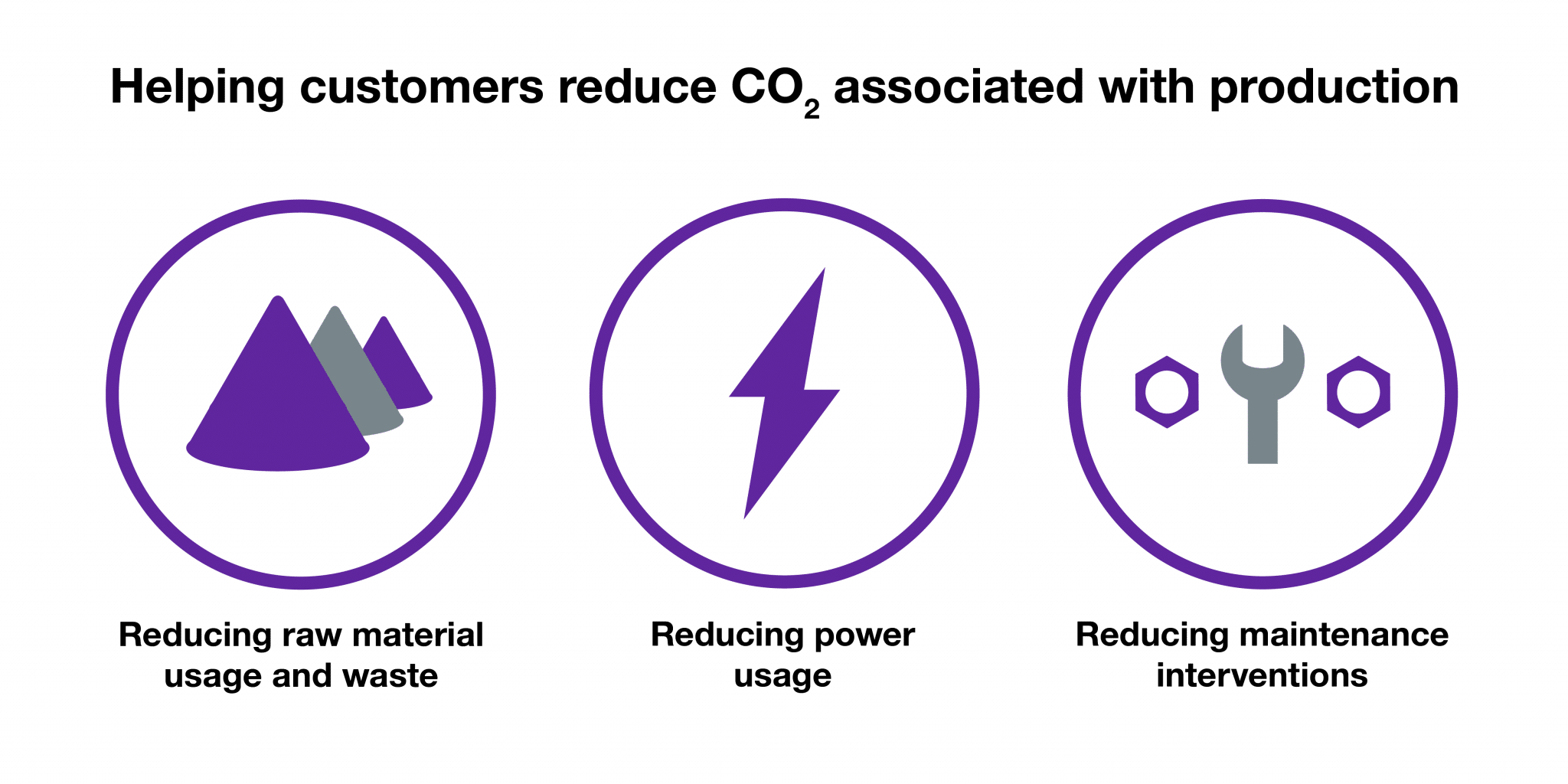Teka TPZ Planetary mixer achieves environmental and financial savings for major roof tile producer
Teka TPZ replaces rotating pan mixer, saving 68,000kWh of power per year.
£40,800
Annual-Saving
23.8t
Annual CO2 Saving
43%
Return-on-investment
We are now closed for the Christmas period, returning on 5th January 2026. Wishing you all a Merry Christmas and a Happy New Year!
Contact UsThe UK government has made a legally binding commitment to achieve carbon net zero by 2050. Across the industry, it has become mission-critical to find environmentally conscious ways to produce concrete. We want to help.
The concrete industry is undertaking a wide range of solutions to reduce its environmental impact, and specifically CO2, yet the concrete batching plant itself is often overlooked. What measures can be undertaken at a batching plant level to complement other carbon reduction initiatives?
At ConSpare, we believe that carbon emissions associated with concrete production can be reduced significantly by improving the performance of concrete batch plants and employing smart maintenance solutions.
Producing concrete through batch plants has always been a resource-heavy process. As well as requiring large volumes of raw materials, carbon-intensive cement and huge amounts of power, it also consumes large amounts of steel components such as wear parts and spare parts. The challenge today for concrete producers is finding ways in which this long-running approach to batch production can be improved, and done in a way that is more cost- and carbon-effective.

Reducing cement usage, whether that be Ordinary Portland Cement (OPC) or a green alternative. Minimising the number of rejected batches and maximising yield.
Identifying areas of the process where excess power is expended through poorly specified or maintained equipment, and adopting energy efficient technologies.
Ensuring that the concrete batch plant is running as efficiently as possible with minimal maintenance, investing in components and spares with the lowest whole-life carbon footprint.
Our white paper, ‘Why sustainability is a concrete matter: Reducing carbon and cost from concrete batching plant operations’, addresses how inefficiencies in the plant and production process lead to wasted raw materials, additional energy consumption, and increased maintenance interventions. All of which ultimately result in avoidable carbon and increased operating cost.

General Materials:
• ICE Database 2019: Embodied CO2e of Aggregate & Sand, Virgin, Land Won & Marine = 4.93kgCO2e/t
• ICE Database 2011: Embodied CO2e of Polyurethane = 3,760kgCO2e/t
• ICE Database 2019: Embodied CO2e of Polyethylene = 2,540kgCO2e/t
• ICE Database 2019: Embodied CO2e of Rubber = 2,850kgCO2e/t
• ICE Database 2011: Embodied CO2e of Steel (UK General – Virgin) = 2,890kgCO2e/t
• ICE Database 2011: Embodied CO2e of Steel (UK General – Recycled) = 470kgCO2e/t
• ICE Database 2011: Embodied CO2e of Steel (UK Average) = 1,460kgCO2e/t
Binders:
• ICE Database 2019: Embodied CO2e of Cement, General, UK Average Blended = 832kgCO2e/t
• ICE Database 2019: Embodied CO2e of Cement, CEM1 Ordinary Portland Cement = 912kgCO2e/t
• ICE Database 2019: Embodied CO2e of GGBS = 83kgCO2e/t
• ICE Database 2019: Embodied CO2e of Ground Limestone = 32kgCO2e/t
Electricity:
• DEFRA 2023 GHG Conversion Factors UK Grid Electricity + Transmission & Dist. = 0.225kgCO2e/kWh
• DEFRA 2022 GHG Conversion Factors UK Grid Electricity + Transmission & Dist. = 0.211kgCO2e/kWh
• DEFRA 2021 GHG Conversion Factors UK Grid Electricity + Transmission & Dist. = 0.232kgCO2e/kWh
• DEFRA 2020 GHG Conversion Factors UK Grid Electricity + Transmission & Dist. = 0.253kgCO2e/kWh
• DEFRA 2019 GHG Conversion Factors UK Grid Electricity + Transmission & Dist. = 0.277kgCO2e/kWh
• Interactive Carbonbrief 2008 Figure – How UK Transformed Electricity Supply Decade = 0.495kgCO2/kWh
Sheets of Paper in a Tree:
• Ribble Packaging Ltd 2018: It is estimated that a standard pine tree, with 45ft of the usable trunk and a diameter of eight inches, will produce around 10,000 sheets of paper.